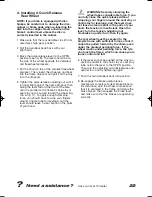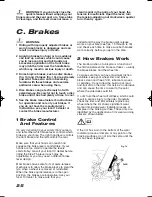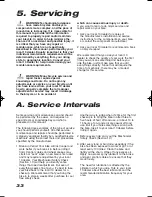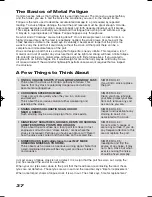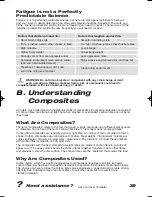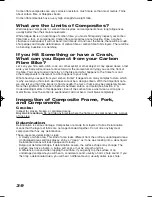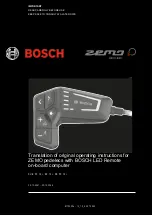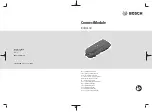
?
Need assistance?
Ask your
local 13 dealer
34
4 After every long or hard ride or after every 10
to 20 hours of riding:
• Squeeze the front brake and rock the bike
forward and back. Everything feel solid? If you
feel a clunk with each forward or backward
movement of the bike, you probably have a
loose headset. Have your
local 13 dealer
check it.
• Lift the front wheel off the ground and swing it
from side to side. Feel smooth? If you feel any
binding or roughness in the steering, you may
have a tight headset. Have your
local 13
dealer
check it.
• Grab one pedal and rock it toward and away
from the centreline of the bike; then do the
same with the other pedal. Anything feel
loose? If so, have your
local 13 dealer
check
it.
• Take a look at the brake blocks. Starting to
look worn or not hitting the wheel rim
squarely? Time to have the
local 13 dealer
adjust or replace them.
• Carefully check the control cables and cable
housings. Any rust? Kinks? Fraying? If so,
have your
local 13 dealer
replace them.
• Squeeze each adjoining pair of spokes on
either side of each wheel between your thumb
and index finger. Do they all feel about the
same? If any feel loose, have your
local 13
dealer
check the wheel for tension
and
trueness.
• Check to make sure that all parts and
accessories are still secure, and tighten any
that are not.
• Check the frame, particularly in the area
around all tube joints; the handlebars; the
stem; and the seat post for any deep
scratches, cracks or discoloration. These are
signs of stress-caused fatigue and indicate
that a part is at the end of its useful life and
needs to be replaced. See Appendix A.
WARNING: Like any mechanical
device, a bicycle and its components
are subject to wear and stress. Different
materials and mechanisms wear or fatigue
from stress at different rates and have
different life cycles. If a component’s life
cycle is exceeded, the component can
suddenly and catastrophically fail, causing
serious injury or death to the rider. Scratches,
cracks, fraying and discoloration are signs of
stress-caused fatigue and indicate that a part
is at the end of its useful life and needs to be
replaced. While the materials and
workmanship of your bicycle or of individual
components may be covered by a warranty
for a specified period of time by the
manufacturer, this is no guarantee that the
product will last the term of the warranty.
Product life is often related to the kind of
riding you do and to the treatment to which
you submit the bicycle. The bicycle’s
warranty is not meant to suggest that the
bicycle cannot be broken or will last forever.
It only means that the bicycle is covered
subject to the terms of the warranty. Please
be sure to read Appendix A, Life Expectancy
Of Your Bike And Its Components, starting on
page 35.
5 If either brake lever fails the Mechanical Safety
Check (Section 1.C), don’t ride the bike. Have
your
local 13 dealer
check the brakes.
6 If the chain won’t shift smoothly and quietly
from gear to gear, the derailleur is out of
adjustment. See your
local 13 dealer
.
B. If Your Bicycle Sustains
An Impact
First, check yourself for injuries, and take care of
them as best you can. Seek medical help if
necessary.
Next, check your bike for damage. After any
crash, take your bike to your
local 13 dealer
for a
thorough check. See also Appendix A,
Life
expectancy of your bike and its components.
WARNING: A crash or other impact
can put extraordinary stresses on
bicycle components, causing them to fatigue
prematurely. Components suffering from
stress fatigue can fail suddenly and
catastrophically, causing loss of control,
serious injury or death. Even if a helmet that
has sustained an impact is not broken, it
must be replaced. The structure of the helmet
is deformed in absorbing the impact and this
damage will reduce the protection it offers.
13
owners manual GENERIC A5 aw
05/05/14
10:25 Page 36



